QR’s PRsix for 2015
Quintana Roo's PRsix is a case study in listening. Too many bike companies design their bikes without much thought given to the consumer. Rather, they're built for Pro Tour or Continental team riders; or they're the expressions of a bike designer's pet theory. There are bikes being sold right now that tick all feature boxes but their owners cannot adjust them; fix them; travel with them.
What if a bike designer said no, we're not going to try to build the world's fastest bike. We're going to build one of the top three fastest bikes, but focus on making it easily adjustable; easy to take on an airplane? What if, instead of cramming every possible feature into a bike, we built one that can be taken apart and built up with two sizes of Allen wrenches?
At least three bike companies have tacked away from exotic motifs and devices, tacking toward convention and ease-of-use. Cervelo, Cannondale and Quintana Roo adopted a body language suggesting that bikes have become too complex for their owners. When you can't fly your bike to a race because it defies any owner's ability to assemble it, is the bike too exotic for its (and your) own good?
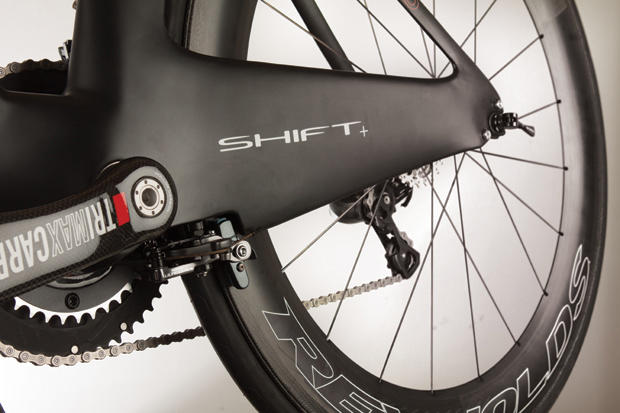
Let's talk first about this bike's geometry and sizing. The PRsix is a departure from QR's recent bikes. Just as Cervelo and Felt revised their geometries so that the bikes got "taller" versus their length, the PRsix is taller than its own CD01 and Illicito. If you want to employ the low-frame, tall-pedestal technique discussed in "The Return of Long and Low" (link just below this article), QR's two bike models named just above are well suited for this. Not the PRsix. As regards fit, it's very much in line with the new Cervelo P series bikes, and Trek's Speed Concept. Very middle of the road, fat of the curve.
When I write this I'm talking just about the frame; the stack and reach of the frame. As we have come to understand with superbikes (bikes with their own integrated stem and maybe handlebar), the front-end geometry can orient a bike lower or taller than its frame geometry suggests because of the geometry of the integrated stem. The 90mm-long stem on the PRsix places an aerobar in the same position in space that would a stem pitched at –6° with a low (10mm) headset dust cover. It can be pedestaled up from there.
This means the PRsix, while having a frame geometry that is right in the middle, is very slightly taller than its stack and reach suggest because the stem's geometry forecloses on a position analogous to a standard –17° stem (a stem with its extension parallel to the ground).

What does this mean? The PRsix therefore fits, all things equal, similar to a Felt IA or B Series bike. The PRsix is slightly taller in front than a Cervelo P2 or P3 (when you factor QR's integrated stem into the equation), but not as tall as a Specialized Shiv. It's a well-fitting bike, but it's very different geometrically than its CD0.1 and Illicito cousins.
What if you need the front end of your PRsix lower? That was the situation faced by last week's Ironman Texas winner Matt Hanson. We featured Matt's bike just after his win, and Matt kindly submitted to a 125+ post "Ask Me Anything" thread on our Reader Forum. Nowhere did the question of his bike's front end come up but let's talk about it here. While the PRsix is spec'd with Profile Design's really fine Aeria Carbon integrated aerobar, that's a relatively high profile bar on a moderately high profile frame/fork/stem. Some folks with an aggressive armrest drop are not going to find that combo low enough.
Matt's solution was a TriRig Alpha C bar in its undermount configuration (shown below). I don't like undermounts usually, because the elevation gap between the pad and extension is too great. But not with this razor thin pursuit bar. I reckon this config drops the pads about 45mm in elevation from the stock Profile Aeria. Why the Alpha C instead of the Alpha X? The PRsix has an integrated stem and so does the Alpha X. The bar you put on a PRsix, whatever it is, must have a standard 31.8mm round section on which the stem is bolted (just like most all your bikes of any type).
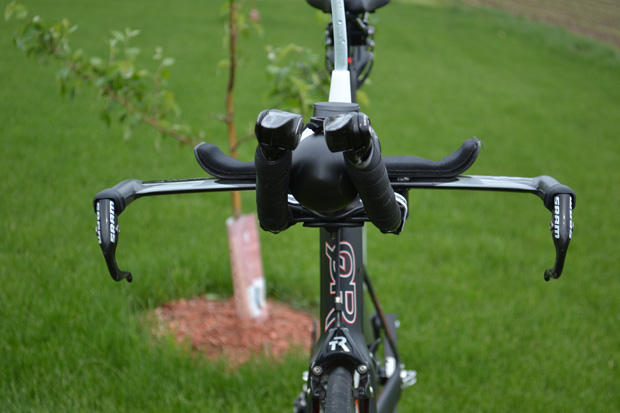
By my calc, the most armrest elevation drop you're likely to get on the 54cm size with the OE spec'd bar is about 13.5cm if your saddle height is the same as mine (78.5cm). This alternate front end gets me almost 18cm of drop, which is well more than enough. In my opinion, the TriRig Alpha C or the Profile Aeria is the correct bar for this bike, depending on your rider position. Of course, there are other bars that are low-profile and will give you more drop, but the Alpha C is an elegant low-profile solution for this elegant bike.
See more on finding your correct size and config when we get to the size chart and system below.
Then there's the sizing nomenclature, and it's going to clear things up greatly for those who "get it," and be a stumbling block to those who don't get it.
QR sizes its PRsix according to each size's stack, so, a bike with a 52 centimeters, or 520 millimeters if you prefer, of stack is size-52. Let's analyze what this means.
If you look at QR's own CD0.1, its size ML has a stack of 517mm and a reach of 438mm. This is about analogous to a size-56. Remember the old, vintage, long and low Cervelo P3 Carbon, before its geometry was reworked taller? One point in its size run was a frame with a stack of 516mm and a reach of 433mm. That particular P3 was its size-56. So, as you see, a bike with a stack of 52cm (520mm) can be typical of a lot of bikes in that size-ML or size-56cm territory. This is especially the case when you consider that the PRSix in size-52 is very slightly taller than a conventional bike with a 520mm stack because of its stem geometry.
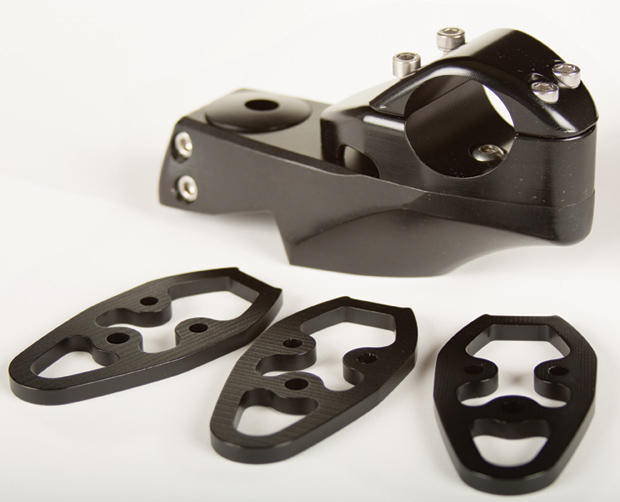
Let's look at the PRSix in size 54. It has a stack/reach of 540mm/425mm. Trek's Speed Concept in its size L has a stack and reach of 541mm/426mm. These are identical frames size-wise. But the SC has a front-center of 624mm and the PRSix in size-54 has a front-center of 633mm, so, while the frames are virtually identical in fit, the QR is built with the idea of a rider who's positioned more forward.
Pardon the tall weeds, but I bring this up because I ride a Trek SC in size L and, yes, this means I'd probably ride a PRSix in size 54. Whoa! I'm 6'2"! Me riding a size-54 bike? That's crazy! Nope. Not crazy. It's just the way these bike sizes are named and while this breaks from convention, if you know that a 54cm bike has a 54cm stack, you don't have to wonder how tall this bike is for fit purposes, do you?
This is why the naming convention for each size of PRSix is a breath of fresh air, and perfectly understandable, for those who understand it; it's very foreign, however, to those who can't wrap their brains around why they'd ride a 58cm road bike, but a 54cm in the PRsix. Bear this in mind when you look at your proper size in this bike.
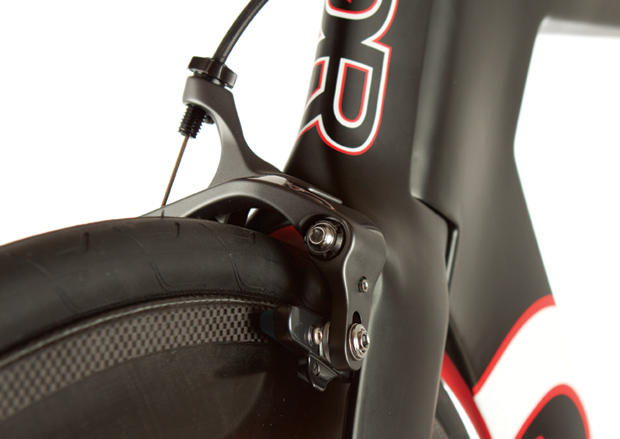
Handling. As noted above this bike is a little bit stretched once you get down "below the waist," versus other tri bikes such as the Speed Concept. This is due to a shallow head angle (72°) combined with a lot of fork offset (48mm). This pushes the front wheel axle out further in front of the bottom bracket without making the bike sluggish. Its trail is on the sprightly end (59mm) for a tri bike. No reason for this bike to have a high BB, so, it's got a relatively low one (7.35mm of drop from the wheelbase line). Stable. Well-balanced. Just a nice way to make a tri bike.
Aerodynamics. QR's been hanging its hat on a particular theory of aerodynamics: Get the air away from the drive side of the bike, push it past the bike on the other side. The down tube shape, the off-side chain stay, all are designed with this in mind. If you look at that huge chain stay on the left-hand side (image furthest up) you can see what's going on here.
This Illicito did this, but, remember above, when I wrote about, "a bike designer's pet theory."? What QR calls its SHIFT approach is a very plausible theory, but the Illicito took this so far as to get ride of the off-side seat stay. Some owners have written that, for those who want a stiff rear triangle, the Illicito's rear triangle was missing a tube necessary for this stiffness. For some users the Illicito might have been an over-leveraging of that theory. The PRsix, is walks that back a little, and it's got a pair of seat stays.
Quintana Roo has done something interesting, which I've never thought of and I suspect others are in my boat. If you create a tube – down tube let's say – that reacts a specific, desired way in the wind, what happens when you scale a bike up and down for sizing? While the frame scales up, the wheel size doesn't. QR scales its frames appropriately, for sizing, and takes the extra step of maintaining the distance between the down tube and the trailing edge of the front wheel.
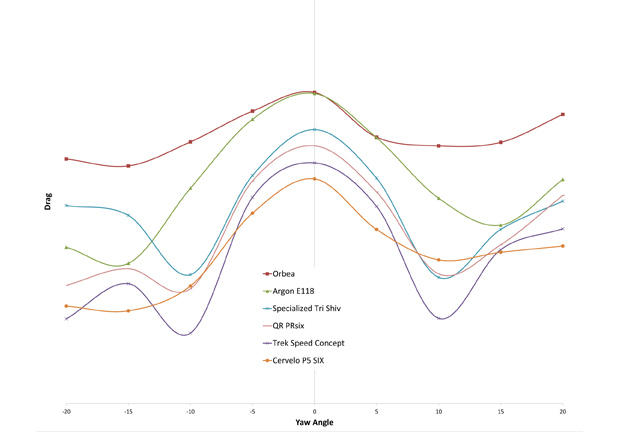
This complete bike comes in 4 options. Yes, you can buy it as a frame only but that makes no sense, since the least expensive option is only $500 more than the bare frame and the wheels alone on that bike are worth the $500.
The lesser expensive options are appropriately priced relative to each other, that is, the PRsix Ultegra, at $5,000 complete, reflects correctly the price difference between itself and the same bike with Reynolds Strike Wheels at $6,100. If you already have some nice, 11-speed Shimano/SRAM-compatible race wheels, buy the cheaper version. In fact, if you will train and race on your race wheels see if you can get money off for not taking any wheels – these are easily sold stand-alone by your retailer. This is a mechanically-shifted bike.
The PRsix Di2 Race, for $8,500, is a nice bike. It's got Ultegra electronic and the Reynolds wheels.
There's an in between kit, the Dura Ace kit, but it's a smattering of Dura Ace. At $7000 what do you get above the $5000 or $6,100 builds? A Dura Ace rear deraileur, and the carbon (versus aluminum) versions of the Profile Aeria handlebar. Here's one consideration: If you like the TriRig set up on Matt Hanson's bike (and if you need that lowness), the two lower-priced builds have lower-end handlebars already, so, replacing them with a TriRig is not paying twice for a top-end aerobar.
Back to fit, just for a moment, only to show you QR's way of choosing the right sized bike, correctly configured.
You determine this by knowing your "Pad" X and Y, or Pad Stack and Pad Reach, whatever your nomenclature for the X and Y dimensions (length and height) from the bottom bracket center to the top of the pad. Just like Cervelo, Trek, BMC and other companies; same sizing system. But, it's X to the back of the pad rather than the center of the pad.
So, me, I'm about 630mm of Pad Y and 505mm of Pad X (to the center of the pad). You have to subtract about 40mm of center-pad-X to get to back-pack-X. That makes my 505mm of Pad X about 465mm for the purposes of this calculator. I'm looking for something like a 630mm (Pad Y) and 465mm (Pad X). Where would I find that?
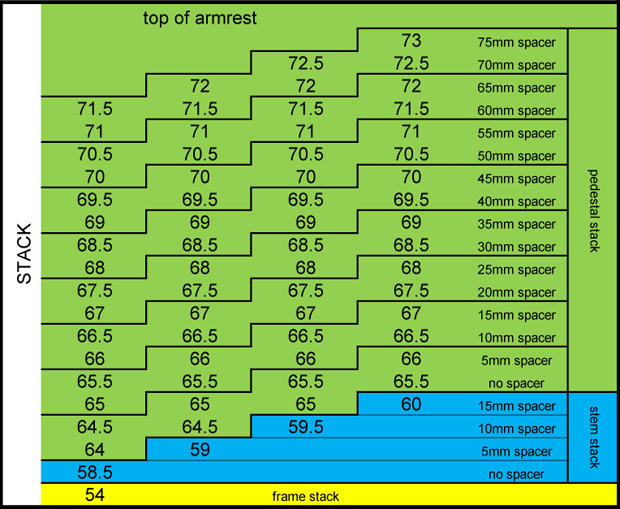
Above is a chart for the 54cm frame size. The numbers above are in centimeters, so, if I'm 630mm of Pad Stack (or Y), that's 63cm on the chart above. Pad Y is in the green shaded area, and the closest I can come is 64cm, as you see. Each step up (see how the green area is stepped, like a ladder?) are the pedestals or spacers (shown in an image above, alongside the stem); they are part of the stem system. You can gain your height either with these stem pedestals or by pedestaling the aerobar.
With all pedestals out, gone, everything slammed, I can get as low as a Pad Y of 64cm. This means one of three things: that I need to go to the next size down (52cm); or that I need to accept the luxury or armrests 10mm higher; or that I do what Matt Hansen did and replace the Profile Aeria with a handlebar that is lower profile (like the TriRig).
The blue shaded area is what we in the world of bike fitting call "HX and HY," and refers to the X and Y measures to the center of the handlebar clamp. This is handy, because modern fit bikes (like the GURU, the Purely Custom and the Shimano) deliver this metric. You put any handlebar you want on the fit bike, you finish the fit, and if the fit bike reads one of those blue numbers, that's your set up. For example, if the fit bike reads 59.5 for HX it's this bike, size 54, with 10mm of stem spacer, or aerobar pedestal if you prefer (but only if the aerobar you used during the fit session is the bar you'll place on the bike!).
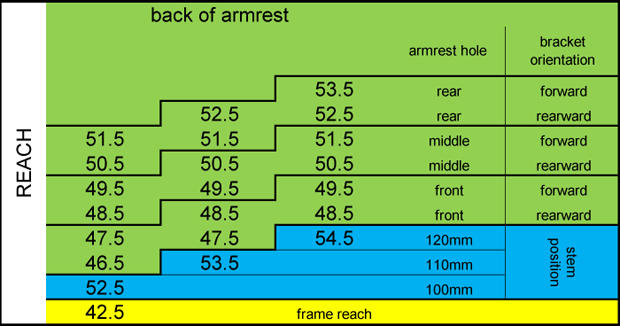
Above is the part of QR's chart where we determine length (again, this chart shown here is just for size-54). Now the ladder step-ups refer to stem length. I'm looking for 46.5cm (465mm), and that's this bike with the 110mm stem. What if I were looking for 45.5mm instead? It's not on the chart, but intutively I'd place the 100mm stem on the bike. What about 44.5cm? Also not on the chart, but QR makes these stems for the PRsix down to 80mm, in 10mm increments. So it would be the 90mm. If you need to go shorter than the 80mm stem, just start moving the pads back to a more rearward hole, or pull the aerobar extensions back, and the pads will ride back since they're attached to the extensions.
The entire fit chart, for every size, is downloadable from the Slowtwitch server.
I think you can see why this bike is, with the Profile Aeria, very slightly on the tall side, fitwise. I would be absolutely perfect on the size 54cm, if the pads were just 10mm lower (and, really, if I was going to ride this bike I'd ride the 54cm and just have the pads sit 10mm higher than I'm used to riding). I ride with a fairly low front end, so it's going to fit most of you as-is, as it's spec'd. But some of you will need to move to a different bar, as Matt did.
I cannot leave off talking about this bike without a comment about its simplicity. The rear brake caliper, as with the front, is standard. I don't think I've ever seen a tri bike with an undermount rear caliper that is standard. Usually it's some difficult-to-adjust thing that has a cable housing that threatens to hit the inside of the off-side crankarm. When I say these brake calipers are "standard," there's a version of Shimano's standard calipers called "direct mount," which gets rid of hardware and saves a bit of weight.
The PRsix can accept upgrades to TriRig or Magura hydraulic (front and rear) and has bosses or holes for these. Again, I'd ask the retailer for a little credit back on the caliper set if you do want to go the exotic route.
If you don't go exotic this is probably the most easy-to-use superbike today. QR seems to say with this bike, "It has to fit; weight does matter (almost a pound lighter than a number of other popular superbikes); it should be easy to pack and repack for race travel; but it still needs to be aero."


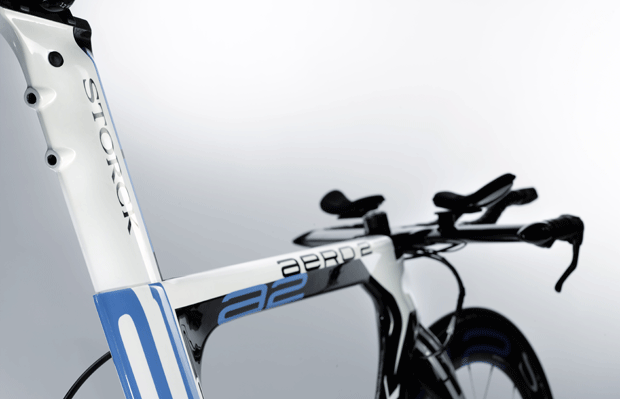
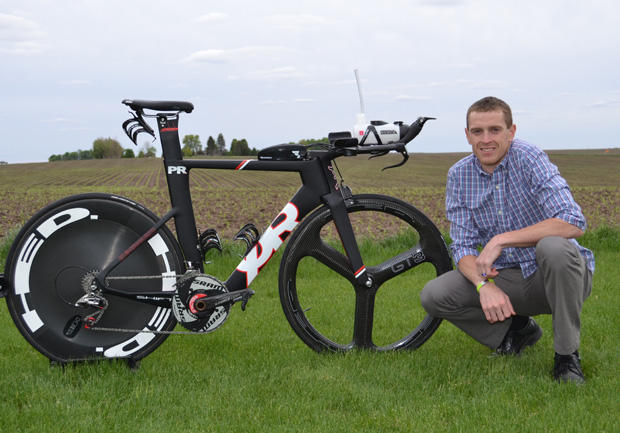
Start the discussion at slowtwitch.northend.network